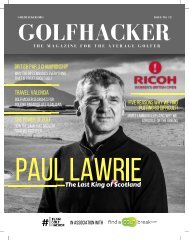Inside History: Protest. Revolt & Reform
For our next issue we take a closer look at the theme of Protest from the events of Peterloo to the fall of the Berlin. Inside we cover a whole range of historical protests and the individuals who led the charge for change. This issues includes: John Brown's raid on Harpers Ferry, The Suffragettes, Billie Holiday and the role music has played in protests, The Civil Rights Movement, Protest and Sport, We are the People: The Fall of the Berlin Wall, Bloody Sunday at Trafalgar Square, and much much more.
For our next issue we take a closer look at the theme of Protest from the events of Peterloo to the fall of the Berlin. Inside we cover a whole range of historical protests and the individuals who led the charge for change. This issues includes:
John Brown's raid on Harpers Ferry, The Suffragettes, Billie Holiday and the role music has played in protests, The Civil Rights Movement, Protest and Sport, We are the People: The Fall of the Berlin Wall, Bloody Sunday at Trafalgar Square, and much much more.
- No tags were found...
Create successful ePaper yourself
Turn your PDF publications into a flip-book with our unique Google optimized e-Paper software.
SHUT UP AND
DRIBBLE?
By Rachel Lee Perez
Images: Nationaal Archief, Flickr, Creative Commons
It was October 16, 1968. Two American
athletes, Tommie Smith and John Carlos,
had just won gold and bronze medals in
the 200-meter sprint at the Summer
Olympics in Mexico City. Both athletes,
with black gloves on their hands, lifted
their fists up into the air as the United
States National Anthem played over the
grand speakers. This act of protest on
behalf of human rights would lead to the
expulsion of both athletes involved. This
demonstration would become but one in
a series of demonstrations by athletes
throughout the ages to bring awareness
to racial and social injustice.
The Summer Olympics of 1968 took place
only months after the assassination of civil
rights leader, Dr. Martin Luther King, Jr. In
addition to heightened racial tension,
there were also regular protests
throughout the United States stemming
from differing opinions in regard to the
Vietnam War.
Leading up to the Olympics, Smith and
Carlos became part of an organization
called the Olympic Project for Human
Rights (OPHR) which protested against
racial segregation in sports, calling for
equal treatment of Black athletes and the
employment of more Black coaches. At a
time when Black athletes like Jackie
Robinson were breaking through the
white barrier in professional sports, the
OPHR sought to remind Americans that
these accomplishments did not mean that
racial inequality no longer existed within
sports. Initially, the OPHR intended to
boycott the Olympics altogether but Black
athletes like Smith and Carlos chose
instead to compete in the Games and to
use their platform as a way to further
push the project’s objectives.
On October 16, 1968, Smith won the
200-meter sprint and set a world record
of 19.38 seconds. Following shortly
behind him at 20.06 seconds came
Australian athlete, Peter Norman. And
finally, in third place at 20.10 seconds
came Carlos. As the three athletes waited
to take the podium, they talked among
themselves about how they would use
their platform to bring awareness to the
human rights cause. Smith and Carlos
removed their shoes to represent Black
poverty, wore beads around their necks
to represent lynching, and donned a
black glove on one hand to represent
their solidarity with oppressed Black
people around the world. The men had
each initially planned to wear black
gloves on both hands but Carlos realized
before taking the podium that he had left
his pair back at the Olympic Village.
Norman, the white Australian athlete that
had taken second place, suggested that
Carlos wear one of Smith’s gloves. This is
why, when you see the iconic picture of
Smith and Carlos with their gloved fists in
the air, Smith is seen raising his right
hand and Carlos is seen raising his left.
Although Norman did not raise his fist
along with his fellow athletes, he did don
a badge for the OPHR. Similar to the
United States, Australia was also in the
midst of their own awakening regarding
racial discrimination. With policies
beginning in 1901 and some running all
the way through 1973, Australia was
under the legislation of White Australia
Policy which essentially halted all non-
European immigration into the country
and further limited the rights of nonwhite
people. In demonstration of his
protest of racism within his own country,
Norman stood in solidarity with his fellow
athletes.
When they took the podium and the
Star Spangled Banner began, the
American athletes turned toward the
United States flag, bowed their heads,
and lifted their gloved fists. This image
would go down in History and would
become one of the most iconic and
most influential incidents in sports
History. In response to this
demonstration, the audience booed
and hissed.
The men were rushed from the
stadium with Olympic officials hot on
their heels. Shortly after what Olympic
officials deemed to be too much of a
political statement for a setting that is
generally intended to be apolitical, the
President of the International Olympic
Committee, Avery Brundage, ordered
for the suspension of Smith and Carlos.
Interestingly, Brundage had served as
the President of the United States (US)
Olympic Committee during the 1936
Games and had not raised objections
to the Nazi salutes used there. While
the US Olympic Committee ignored the
demands of suspension, they did
eventually expel both Smith and Carlos
from the Games.
When Smith and Carlos returned to the
United States, they faced backlash and
even death threats. But while Smith
and Carlos would eventually return to
sports, both playing for the National
Football League (NFL) and Carlos even
eventually working with the 1984
Summer Olympics Organizing
Committee, Australian Silver Medalist
Peter Norman would not have a similar
fate. For his part in the demonstration,
Norman was nearly entirely ostracized
from the sporting community. He was
vilified in the media and was rejected
INSIDE HISTORY 53

















